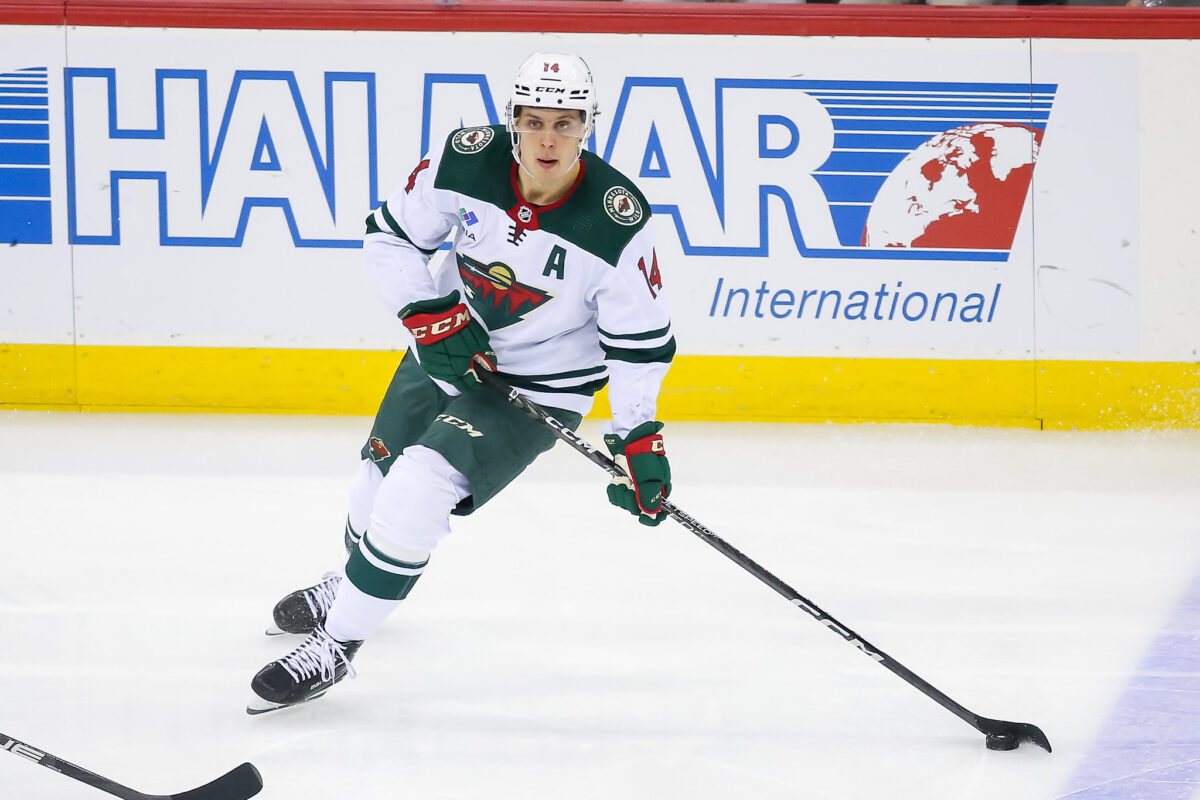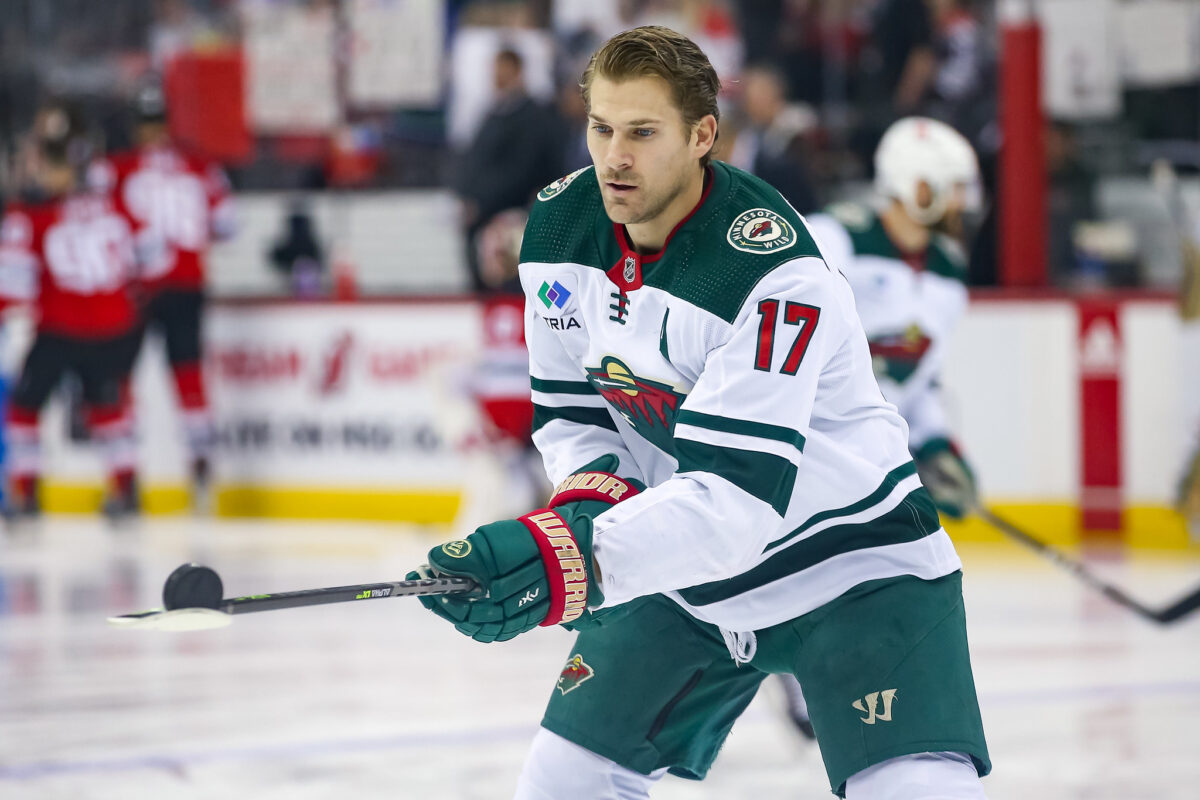The Minnesota boys’ state high school hockey tournament wrapped up this past weekend, and champions were crowned. In the Class A championship, St. Cloud Cathedral took down Hermantown. In the Class AA championship, which I was lucky enough to witness in person, Edina took down Chanhassen in a super tight game until the end. It was also Lou Nanne’s last time calling the AA tournament after 60 consecutive years.
While the tournament was full of upsets, overtime thrillers, devastating losses, big hits, and unique goals, it also had some teachable moments specifically for the Minnesota Wild. Some may ask how professional players can learn from high school-age players, but there are always opportunities to improve regardless of the source. In this article, we’re going to look at things done in the AA championship game that the Wild need to improve on in their game.
Wild’s Stickwork Needs Help
One of the first things I noticed when watching the high school game was how well both teams handled their sticks. They played well beyond their age level, mainly on the defensive side. Each team got their sticks in passing lanes just in time to deflect the puck away from its intended target, and they also predicted where passes were headed to pick them off.
Seeing high school-aged players control their sticks so well was extremely impressive. They were composed while playing heads-up hockey so they could see where the puck was headed. It may seem like just a part of the game, but most high school players struggle to play that composed and steady, which typically doesn’t come until they’ve had some time in juniors or college. While some players always excel above the rest, it’s not usually an entire team or, in this case, two teams with those skills.
Several Wild players, like Joel Eriksson Ek, Jonas Brodin, and Brock Faber, routinely use their sticks in this way. They are all quite talented at using their sticks to prevent the puck from reaching its intended target. They’re especially good at it on the penalty kill, which has helped stop many potential goals.

The Wild need more of their players to adopt this skill. Hopefully, some of them watched this game and saw how these players always used their sticks when on the defensive end. While many NHL players will block shots, they sometimes forget to use their sticks to their advantage.
Wild Need to Prioritize Power Play
Edina was able to win the game thanks to their power play. Unfortunately for Chanhassen, they took a very ill-advised penalty at a crucial point in the game. Edina had just tied the game, and the momentum was in their favor, adding a power play; it was nearly a perfect setup for a team with tournament experience like Edina. They’ve won the tournament twice out of the past six years and rarely miss making a tournament appearance.
Related: Lou Nanne Steps Down From MN State Tourney After 60 Years
When Edina went on the power play, they capitalized with as many shots on goal as possible. It didn’t take long for the puck to find the back of the net when a team like Edina was taking shots while the other team was down a man. Former NHL player Curt Giles is the head coach of Edina, and he taught them well.
They passed only when necessary but focused instead on peppering the goaltender with shots, unlike what the Wild do. The Wild have gotten into the horrible habit of passing too many times, and by that point, the defense is ready to block the shot. They’ve had some success lately, but often, it’s short-lived; if they could see that they need to shoot more than pass, their power play would be more successful.
Wild Must Focus Physical Play
Finally, the Wild have to stay focused on their physical play. Of course, the high school rules are a bit stricter in this area, especially the no-tolerance for fighting rule, but they still managed some physicality. However, it was highly controlled compared to past tournaments. Typically, quite a few big hits are thrown in the championship game, but this time, there were hardly any at all, and it helped both sides.
When teams aren’t worried about the big hits, they can focus more on puck control and getting shots on the net. There’s always a time and place for a clean hit, and that’s part of the game, but these players weren’t taking their chances. Thankfully, Marcus Foligno has started to do more of that this season.

In seasons past, he would get rather reckless with his hits, but this season has been fairly guarded and it’s helped his team. Obviously in the NHL, hits are a bigger part of the game but again, at the right time. A big hit can hinder a team as much as help a team if it’s done so at the wrong time. With Foligno, it shows you can always change your game for the better and it would be great if his game stayed more controlled as it has been.
Wild Can Always Improve
No team is perfect, not even the team that wins the Stanley Cup each season. They always have areas to improve, and the Wild have quite a few this season. Stickwork, power play, and physical play are just a few of the areas that have struggled the most often. Again, it may be difficult to believe NHL players can learn from high school players, but those high school teams were some of the most composed I’ve seen across all leagues.
At this point in the season, the Wild are still out of the playoffs but if they have any hope of making it, they should take any help or ideas to improve that they can get. Hopefully, they can keep things going in the right direction and improve these areas to continue winning.
